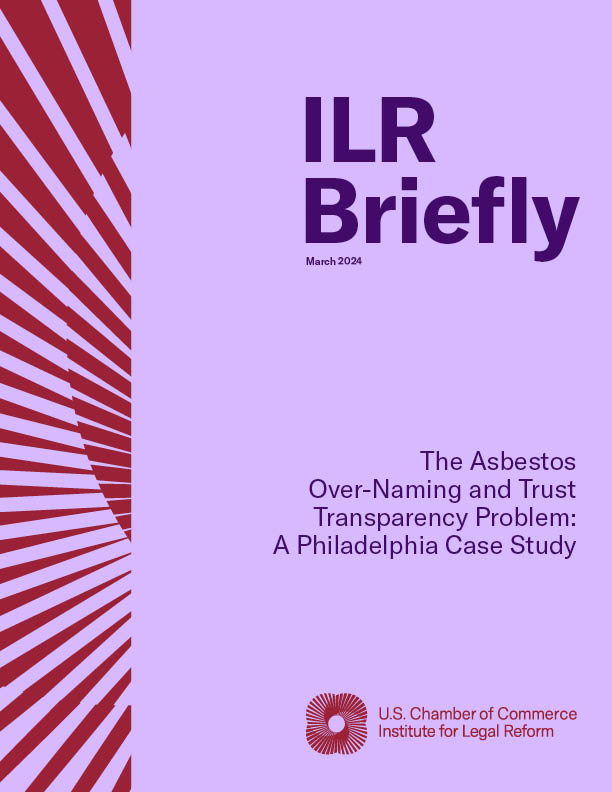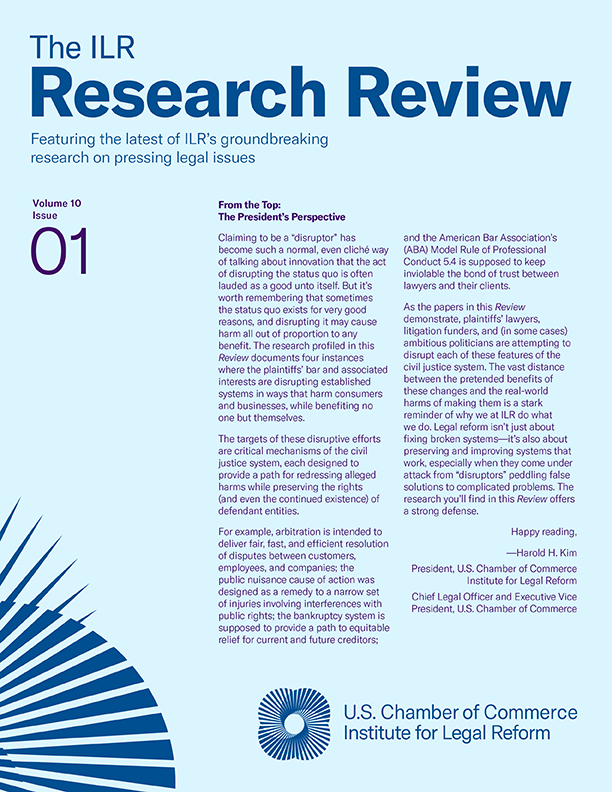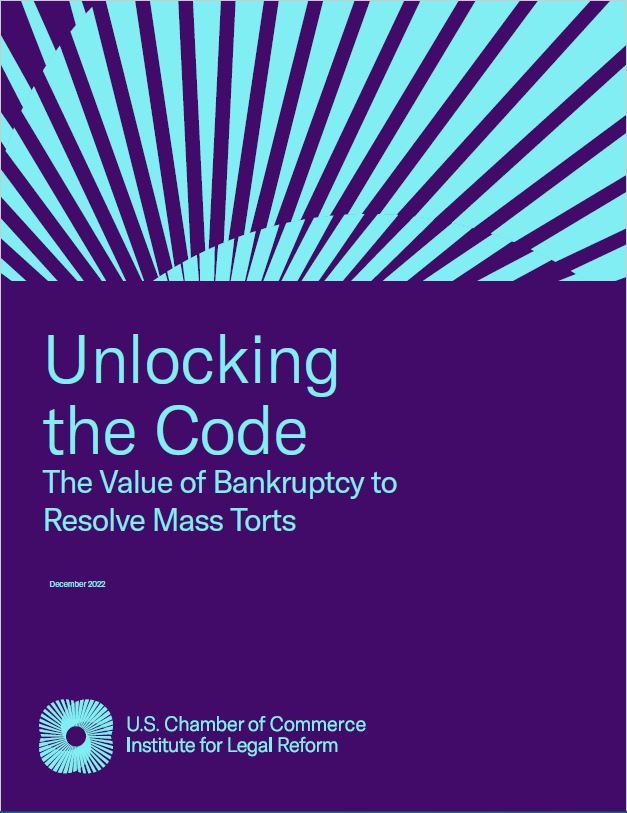This report analyzes the impact that Ohio’s 2013 asbestos trust transparency law has had on asbestos tort litigation in the state and concludes that trust transparency reforms appear to have accomplished the goal of ensuring transparency and fairness without causing delays in case resolution.
The first successful asbestos-related personal injury judgment was upheld by the federal Fifth Circuit Court of Appeals in 1973. After that case, asbestos litigation exploded. A 2005 report by the RAND Corporation estimated that through 2002, approximately 730,000 people filed asbestos claims against at least 8,400 corporate defendants.
The size and scope of the asbestos litigation has driven more than 100 companies involved with asbestos manufacturing and products filing for bankruptcy protection, with experts expecting that more will do so. At least 60 of those companies have successfully established asbestos bankruptcy trusts to resolve their future claims, with additional requests to establish a trust pending. The asbestos bankruptcy trusts have paid close to $18 billion in claims to date and have approximately $37 billion for future claims.
The ubiquity of asbestos in products means that individuals frequently were exposed to asbestos from more than one source and thus, plaintiffs often file claims with more than one bankruptcy trust while also filing tort actions against companies that are still solvent. However, the asbestos bankruptcy trust system is separate from state court systems, which makes it more difficult for the state courts and each trust to fairly adjudicate responsibility and apportion liability. The difference in filing requirements and the lack of transparency between the two systems also creates a situation where fraud and abuse can flourish.
To alleviate these issues and to ensure full, transparent disclosure of all sources of plaintiffs’ asbestos exposure from the start of the tort action, in 2013, Ohio became the first state in the nation to enact legislation to require asbestos bankruptcy trust transparency reform. Proponents believed that trust transparency reform would ensure that the court and all parties to the litigation had the information needed to fairly adjudicate the plaintiff’s claim. Those opposing asbestos trust reform argued that the delays it might cause would prevent plaintiffs from living long enough to have their proverbial day in court. Now that several years have passed since the introduction of trust transparency laws in Ohio, we have the opportunity to examine these claims.
Watching it Work: The Impact of Ohio’s Asbestos Trust Transparency Law on Tort Litigation in the State analyzes the impact Ohio’s asbestos trust transparency law has had on asbestos tort litigation in the state, particularly the impact the transparency requirements have on the time it takes for living mesothelioma plaintiffs’ cases to go to trial or reach resolution. It examines actual cases that were pending in 2010, 2012, and 2014 in the Cuyahoga County Court of Common Pleas, the Ohio court with the most asbestos cases. These three years were chosen because H.B. 380 became effective in 2013 and the research examines cases from the two years before it became effective, as well as the year after it became effective. The report specifically identifies and analyzes each case in Cuyahoga County involving a living mesothelioma plaintiff that was grouped and scheduled for trial during each of the three years studied (2010, 2012 and 2014) to determine how long it took for each case to be resolved and how Ohio’s trust transparency law might have affected the process in each case.
Watching it Work’s analysis concludes that there is no systemic evidence that the trust transparency reforms enacted in Ohio have caused delays in case resolutions. When plaintiffs properly disclose their asbestos trust claims in litigation, there is no appreciable delay in the prosecution of cases. Further, despite opponents’ concerns, it does not appear that defendants are using the trust transparency provisions to deliberately delay cases. This in-depth examination instead reveals that more often it is plaintiffs’ counsel’s trial strategy that causes the longest delays. In short, trust transparency reforms appear to have accomplished the goal of ensuring transparency and fairness without imposing significant burdens on plaintiffs.
View PDF


